
A watery affair
The real issues of global water management took a backseat as crisis mongering and anti dam protests hijacked the Second World Water Forum at the Hague

The real issues of global water management took a backseat as crisis mongering and anti dam protests hijacked the Second World Water Forum at the Hague

Kamal Nath is one of the few Indian ministers to have acquired an international image. He has traversed the globe to attend various environmental conferences and has also played host to several of his foreign counterparts. Nath argues the new found green
The government proposes reductions in subsidies on power, irrigation and higher education
SMITA GHATE was assistant collector in Madhya Pradesh's Sagar District from January 1997 to January 1998. She was transferred for taking a proactive stand on the participation of women in rural development programmes. She was also actively involved in the

Will the future city, marked by responsible governance and a concerned citizenry, be able to address the problems dogging the world's urban centres?

The Delhi administration's move to make the Asola and Bhatti sanctuaries exclusively protected areas ring alarm bells in the local villages
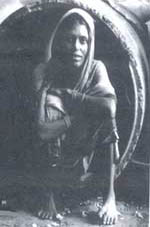
After 20 years of non performance, heads of states will finally sit down to decide where, when and how they will provide people with roofs over their heads

Environment awareness in India's small towns is an apathetic mess

Martha Wangari Karua is a cabinet minister for water resource management and development in Kenya. A lawyer by profession, she is among that rare breed of no nonsense politicians fighting to provide water for all in her water scarce country. In an exclusi
Anna Hazare"s name is synonymous with rural development and people"s power. Hazare had once again hit the headlines in May by undertaking a fast at the Sant Dyaneshwar temple in Alandi, Maharashtra, to protest against the government"s apathy in tackling t
<table border="0" cellpadding="0" cellspacing="0" width="210px"> <tbody> <tr> <td bgcolor="#363636" colspan="2" height="26px" style="color: rgb(255, 255, 255); font-size: 14px; padding-left:5px;"> Editor's Pick</td> </tr> </tbody> </table> <p><iframe frameborder="0" height="380" marginheight="0" marginwidth="0" scrolling="no" src="http://www.indiaenvironmentportal.org.in/files/country/bangladesh/bangladesh_iframe.htm" style="border-width:0px; border-color:#333; background:#FFF; border-style:solid;" width="555"></iframe></p> <hr /> <table border="0" cellpadding="0" cellspacing="0" width="210px"> <tbody> <tr> <td bgcolor="#363636" colspan="2" height="26px" style="color: rgb(255, 255, 255); font-size: 14px; padding-left:5px;"> Country Overview</td> </tr> </tbody> </table> <table border="0" cellpadding="1" cellspacing="1" style="width: 540px;"> <tbody bgcolor="#F0F0F0"> <tr> <td> <p><iframe align="right" frameborder="1" height="310" marginheight="0" marginwidth="0" scrolling="no" src="https://maps.google.co.in/maps?f=q&source=s_q&hl=en&geocode=&q=bangladesh&aq=&sll=20.984928,82.752628&sspn=45.458666,56.513672&ie=UTF8&hq=&hnear=Bangladesh&t=m&ll=23.684774,90.351563&spn=3.42031,3.724365&z=7&output=embed" width="330"></iframe><span style="font-family:arial,helvetica,sans-serif;"><span style="font-size: 12px;">Bangladesh is located between 20 º 34 to 26º 38 north latitude and 88.01 º to 92.42 º east longitude, with an area of 147,570 sq km). With a population of 164.000 million, Bangladesh is one of the world's most densely populated countries.</span></span></p> <p><span style="font-family:arial,helvetica,sans-serif;"><span style="font-size: 12px;">It has a border on the west, north, and east with India, on the southeast with Myanmar, and the Bay of Bengal is to the south. Geologically, Bangladesh is a part of the Bengal Basin, one of the largest geosynclinals in the world.</span></span></p> <p><span style="font-family:arial,helvetica,sans-serif;"><span style="font-size: 12px;">The Basin is bordered on the north by the steep Tertiary Himalayas; on the northeast and east by the late Tertiary Shillong Plateau, the Tripura hills of lesser elevation, and the Naga-Lusai olded belt; and in the west by the moderately high, ancient Chotanagpur plateau.</span></span></p> </td> </tr> </tbody> </table>
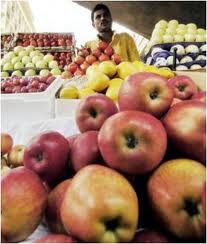
<p class="rtejustify"><span style="color:#000000;"><strong><span style="font-size: 14px;">Food Safety</span></strong></span></p> <p><img alt="" src="http://www.indiaenvironmentportal.org.in/files/country/bangladesh/foodsafety_hl.jpg" style="width: 530px; height: 291px;" /></p> <p>In Bangladesh, the food safety and quality control framework consists of Laws, Regulations & Standards, Administration & Inspection and Laboratory analytical services. Agriculture is the largest sector in Bangladesh economy. Its combine’s contribution (crops, forestry, fisheries, livestock etc.) to the country’s GDP and employment is more than one third and two third respectively. The food laws and regulations reflect this although major weaknesses within the legal framework still exist.</p>

Women in 3 districts in Tamil Nadu discover how to make money and ban booze for the first time

Involving the community in slum improvement has worked successfully in the Philippines and Mexico. Hidebound bureaucrats in the Third World, who insist they know best, should learn a lesson from these experiments.

The flush toilet system and the sewage system, which goes with modern day personal hygiene and cleanliness, are part of the environmental problem and not the solution. Consider the huge amount of clean water that is used to carry a small quantity of human
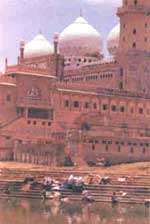
Reduced to filthy, foul smelling cesspools, with mosquito larvae arawing their lazy, intricate patterns on the green surfaces, the same takes and tanks in urban areas draw a passerby's game is when purple hyacinths bloom and disguise their filth. O

A civil engineer and a farmer, he knows the importance of the relationship between land and water. Small dams are his forte.
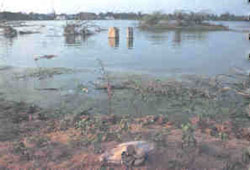
There's enough water in the tanks of Bangalore, Madras and Hyderabad, but more than enough corruption leaves the south high and dry
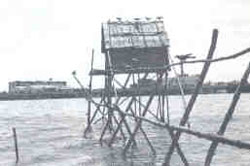
Real estate developers and government agencies are devouring the wetlands in communist ruled Calcutta

Every year, the World Bank channels about US $18-20 billion to developing countries in the form of loans and grants with the ostensible aim of reducing poverty and promoting economic growth. The bank